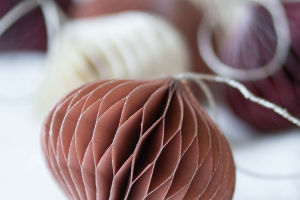Ceramics is an ancient and fascinating art form known around the world for its unique aesthetics and versatility. From ancient clay pots to modern fine porcelain, ceramic production has always played an important role in human culture and life.
In this article, we’ll delve into the history, craftsmanship, and innovation of ceramic making, as well as its importance in contemporary society.
The history of ceramics
Ceramic production can be traced back to ancient civilizations thousands of years ago, with the earliest pottery appearing in places such as China, Egypt, and India. These early ceramics were primarily used to store food and water, but over time, ceramic making evolved into a fine art.
The ancient Greek and Roman periods also produced many exquisite ceramic works, which were often used as decorations and gifts. Ceramics played an important cultural and artistic role in these civilizations, reflecting the aesthetic concepts and technological levels of the time.
Ceramic craftsmanship
The key processes of ceramic production include pottery making, glaze, decoration, and firing. First, the potter needs to select the right clay and then shape it into the desired shape by hand or on a pottery wheel.
The pottery-making process requires skill and patience, as the potter must precisely master the texture and shape of the clay.
Next, the ceramic items are often coated with a glaze to add shine and protect the surface. Glazes can be clear or tinted, depending on the designer's intent. The application of glaze requires some experience to ensure even coverage and proper thickness.
The decoration of ceramic objects is part of the creative expression of the potter. This can include engraving, painting, sculpture, or other art forms. Decoration not only adds to the beauty of ceramics but can also convey a story or emotion.
Finally, the ceramic product needs to be fired, which is an extremely critical step. The firing process, which turns clay and glazes into hard ceramics, often requires high-temperature furnaces and precise control.
Improper firing can cause the ceramic to crack or deform, so the firing technique is crucial.
Innovation in Ceramic Making
Although ceramic making has a long history, it continues to evolve and innovate. Modern ceramic craftsmanship has relied on advances in science and technology to promote new developments in ceramic production.
An important innovation is the use of digital technology and computer-aided design to improve the precision and sophistication of ceramic production.
Ceramicists can now use CAD software to design complex ceramic structures and then create them using 3D printing technology. This makes ceramic production more precise and efficient.
In addition, modern ceramic technology also involves the research and development of new materials. Traditional ceramics typically use clays and glazes, but now there are more options, such as ceramic composites and nanoceramics, which offer enhanced properties and diverse uses.
These new materials enable ceramic products to be used in a wider range of fields, including electronics, medical, and aerospace.
The importance of ceramics in contemporary society
Ceramics still play an important role in contemporary society. First of all, they are an important part of decoration and crafts, used to decorate our homes and improve the quality of life. Beautiful ceramic pieces can become family treasures that are passed down from generation to generation.
In addition, ceramics have a wide range of applications in industry and science. Ceramic products usually have high-temperature resistance, electrical insulation, and chemical stability, so they are widely used in stoves, electronic equipment, chemical laboratory equipment, and other fields.
In addition, ceramics are also widely used in the medical field, such as artificial joints, dental restorative materials, and bioceramics.
Overall, ceramic making is an ancient and vibrant art and craft. It blends traditional skills with modern innovation and continues to contribute to our culture, life, and science.
Whether in art or in high-tech fields, ceramics have an irreplaceable position and will continue to play an important role in future development. Therefore, ceramic production deserves our in-depth understanding and appreciation in order to protect and inherit this precious cultural heritage.


